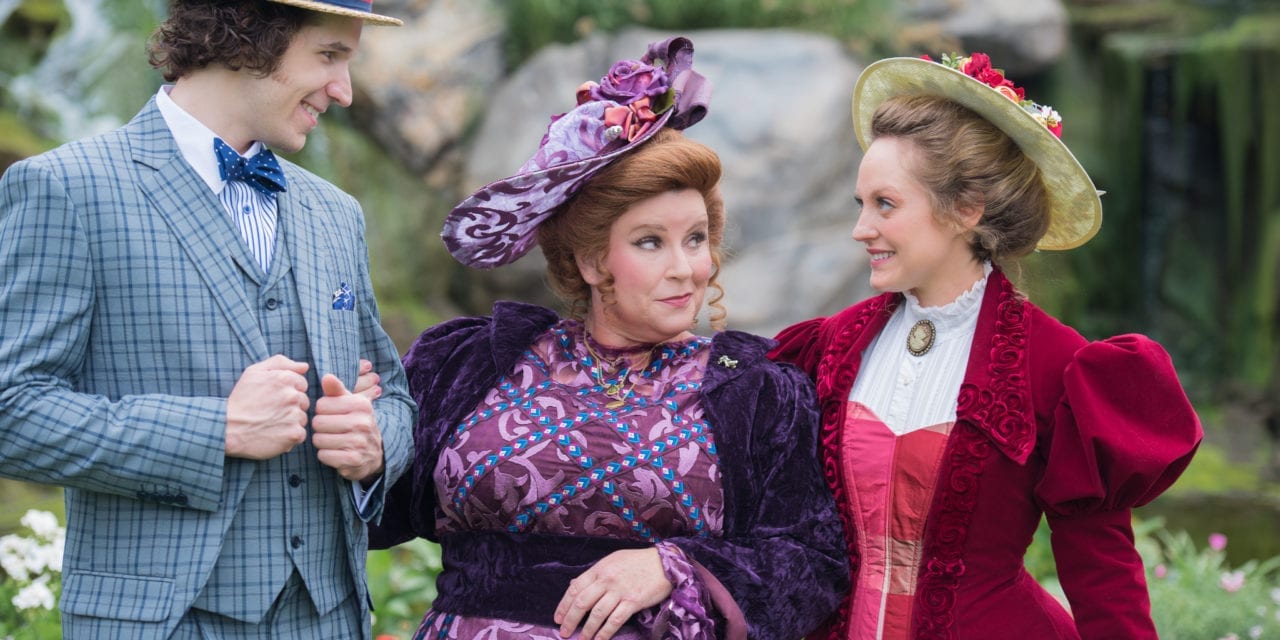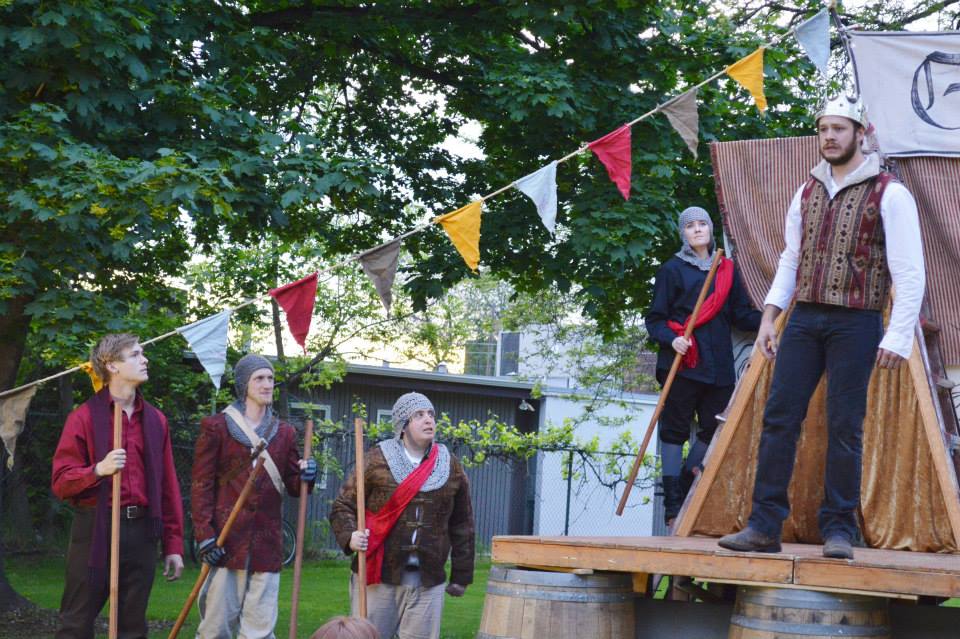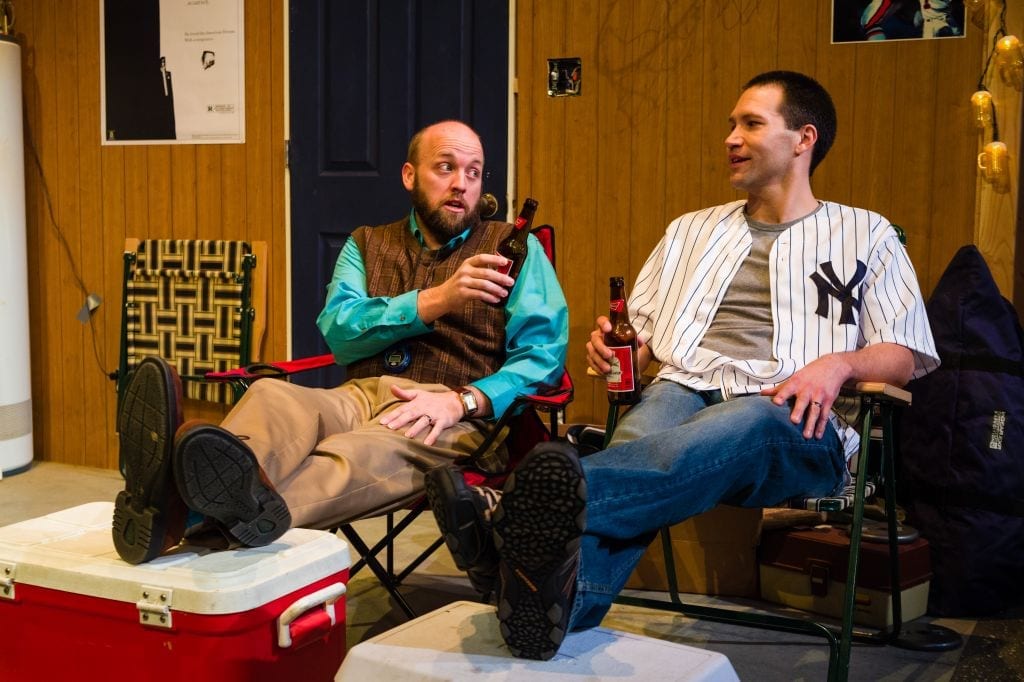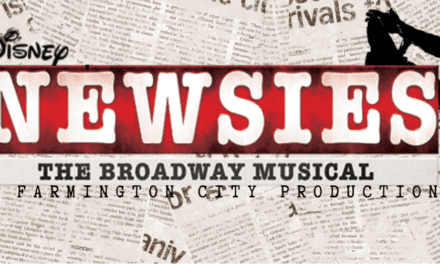OREM — Dolly Levi is back where she belongs: on the Hale Center Theater stage in Orem. One of the last great musicals of the golden age of Broadway, Hello, Dolly! is composer and lyricist Jerry Herman‘s best known work, and it gets an excellent production that even the meddling Dolly would have difficulty improving.

Show closes November 18, 2017.
Hello, Dolly! tells the story of the widowed Dolly Gallagher Levi who is completing a lengthy mourning period after the death of her husband, Ephraim. Chief among her goals is to find a second husband for herself. Her target: the wealthy “half-a-millionaire” Horace Vandergelder. Meanwhile, Horace’s two employees, Cornelius Hackl and Barnaby Tucker, seek adventure of their own in New York City, where they meet Irene Malloy (another widow that Horace is courting) and Minnie Fay. Likewise, Horace’s niece Ermengarde wants to marry the artist Ambrose Kemper, though her uncle is against the match because he doesn’t see value in Ambrose’s vocation. As Hello, Dolly! unfolds, the characters in these entangled relationships experience their ups and downs over the course of a whirlwind day.
For all the song and dance in Hello, Dolly!, director David Morgan never lost site of the human core of the story. This musical is not about learning to dance, watching a parade, or getting married. It is about a middle-aged woman’s emotional journey as she decides to “rejoin the human race” after isolating herself to cope with loss. I appreciated how Morgan had his Dolly (Marcie Jacobsen) slow down for her soliloquies where she talked to or about her deceased husband. These quiet moments paid off in the title song when Dolly displayed a joie de vivre that showed that she was fully ready to resume her life. More practically, Morgan also dealt with the limitations of the Orem Hale stage in “Before the Parade Passes By” and “Put on Your Sunday Clothes,” two songs that could have been disappointing in the small space, but instead were staged in a way that was fully satisfying.

Left to right: David Matthew Smith as Cornelius Hackl, Marcie Jacobsen as Dolly Levi, and Cecily Ellis-Bills as Irene Malloy. Photo by Suzy Oliveira.
Morgan also encouraged his actors to put an individualistic spin on their characters. This worked for some better than others. Shawn Lynn played Horace Vandergelder in a less gruff manner than is traditional. Horace’s almost chipper demeanor did not match the descriptions and action of Michael Stewart‘s script, which calls Horace “tough as nails.” Given the soft edges of the character, I had difficulty seeing why Cornelius and Barnaby were so afraid of Horace. De-emphasizing the curmudgeonly aspects of the character also reduced some of the humor in scenes where Dolly flummoxed Horace.
But none of that really matters. This show is called Hello, Dolly!—not Hello, Horace! Jacobsen’s performance of Dolly Levi was so entrancing that it didn’t matter who she delivered her lines to. Her renditions of “Put on Your Sunday Clothes,” “So Long, Dearie,” and “Before the Parade Passes By” were all unique and made the score fresh and interesting. Jacobsen also has a talent for making the dialogue slide off her tongue in a smooth, clear, effortless manner that makes Dolly’s fast-talking humor sound naturalistic.

Marcie Jacobsen as Dolly Levi. Photo by Suzy Oliveira.
Jacbosen alone makes the show worth seeing, but the supporting cast also has some impressive actors in it. David Matthew Smith is not flashy in his performance of Cornelius, and he rightly resisted the temptation to steal the spotlight. I enjoyed the gradual growth that David Matthew Smith showed in Cornelius as the character matured and fell in love. On the other hand, David Matthew Smith had the misfortune of a malfunctioning microphone in the second act on the night I saw the show, and sometimes he was drowned out by the pre-recorded music (such as in “It Only Takes a Moment”).
Peter Reid Lambert imbued Barnaby with a naivety and innocence that endeared me to Barnaby. But what was most memorable to me was the almost electric connection he had with Kenna Smith, who played Minnie Fay (Barnaby’s love interest). The two were an incredibly cute couple, and their connection in “Dancing” and “Elegance” was impossible to ignore. Lambert also has a knack for displaying Barnaby’s innocence in a multitude of ways that never felt repetitive or cliché. And even on her own, Kenna Smith was unceasingly charming, such as in the hat shop scene.
Jennifer Hill-Barlow‘s choreography was another centerpiece of the production. It started simple, with “Call on Dolly” and “It Takes a Woman” consisting of variations of march steps. But with each new musical number, the choreography became successively more complex, until “The Waiters’ Gallop” and “The Contest” (i.e., the polka dance) were unforgettable highlights of the evening. Additionally, Hill-Barlow’s staging of “Elegance” was the best I have ever seen on stage and was creative in its variations of walking steps. Indeed, the clever staging and surprising use of tap dancing in the song makes this a Hello, Dolly! worth seeing twice.
The visual appeal of this production extends to the superb costuming by MaryAnn Hill. Every actor wore a splendid period costume, whether they were an ensemble member (usually dressed smartly in pastels or patterns), or the leads. I found the first costume for Irene Malloy (played by Laurel Asay Lowe) exquisite, consisting of a shapely black and red jacket over a high-collared white blouse (with a distinctive cameo attached) and a matching red plaid skirt with black accents. But any fan of Hello, Dolly! looks forward to the title character in her dress at the Harmonia Gardens. The emerald dress was bedazzled with hundreds of sparkles, and the effect was striking. That dress stood out even more because of the yellow palette for the Harmonia Gardens, with bright yellow costumes for the waiters, shades of yellow on almost every set piece (designed by Bobby Swenson and Cole McClure) and the yellow hues in Cody Swenson‘s lighting design. In fact, the unity in all visual aspects of the play was present in every scene, and they all strengthened the story.
In sum, Hello, Dolly! is probably the best show on the Utah stage right now. The Orem Hale has created an appealing production that is almost guaranteed to please any audience member. I suspect that it will be years before a Utah company produces an equally good production of this classic show.





